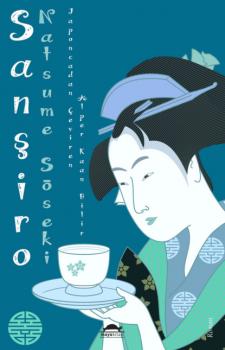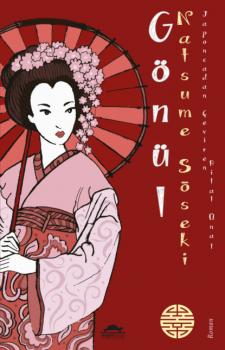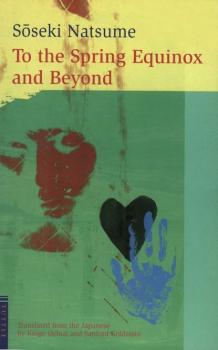ТОП просматриваемых книг сайта:
Natsume Soseki
Список книг автора Natsume SosekiАннотация
Sanşiro, benim en sevdiğim kitaplardan biri. —Haruki Murakami Modern Japon romanının en önemli temsilcilerinden Natsume Sōseki’nin ince mizah ve sonsuz masumiyetle örülü bu romanı, 23 yaşındaki Sanşiro’nun yaşadığı küçük yerden ayrılıp üniversite için Tokyo’ya gitmesiyle başlıyor. Şehrin kalabalığı, yeni insanlar, akademik çevreler ve hepsinden önemlisi kadınlar arasında Sanşiro, yaşamını zenginleştirmenin yollarını arıyor. Sanşiro, ilk aşk, gelenekler, modernleşme ve yaşlılığın alaycılığına karşı gençliğin idealizmini anlatırken, arka planda da dönemin sosyal ve kültürel yapısına getirdiği eleştirileri okuruna sunuyor. Ondan fazla roman ve öykü kitabı olan ve hemen hemen hepsi başka dillere çevrilen Natsume Sōseki, Japonya’nın modernleşme yolunda büyük adımlar attığı Meiji döneminin en önemli yazarlarından biridir.
Аннотация
Genç bir üniversite öğrencisi, tatil yerinde tanıştığı ve “hocam” diye söz ettiği adamla günden güne güçlenen bir dostluk kurar. Yıllardır taşıdığı sırrın ağırlığıyla kendini dış dünyaya ve hayata kapatan hoca, yavaş yavaş genç dostuna içini dökmeye başlar. Natsume Soseki, bu iki karakterin ilişkisini ve gencin hocasını anlama çabasını anlatırken yirminci yüzyılın başlarında Japonya’da gerçekleşen kültürel değişimin sonucunda doğan kuşaklar arası farklılıklara da ışık tutuyor. Dostluklar, aile ilişkileri ve insanı ebedi yalnızlığından kurtarabilecek her şeyi irdelerken insanoğlunun karmaşık ruhsal durumuna unutulmayacak bir incelikle yaklaşıyor. Natsume Soseki, modern Japon romancılığının sembol ismi. – Haruki Murakami
Аннотация
Coincidiendo con el centenario de su aparición, Impedimenta publica una nueva traducción de la obra maestra de Sōseki, que prefiguraría la de autores de la importancia de Akutagawa, Kawabata o Murakami. «Kokoro» («corazón», en japonés) narra la historia de una amistad sutil y conmovedora entre dos personajes sin nombre, un joven y un enigmático anciano al que conocemos como «Sensei». Atormentado por trágicos secretos que han proyectado una larga sombra sobre su vida, Sensei se abre lentamente a su joven discípulo, confesando indiscreciones de sus días de estudiante que han dejado en él un rastro de culpa, y que revelan, en el abismo aparentemente insalvable de su angustia moral y su lucha por entender los misterios del amor y el destino, el profundo cambio cultural de una generación a la siguiente que caracterizó el Japón de principios del siglo XX. Ninguna biblioteca de literatura japonesa estaría completa sin «Kokoro», la novela más lograda de Natsume Sōseki, la más profunda y la última que completó antes de su muerte.
Аннотация
"Soy un gato, aunque todavía no tengo nombre". Así comienza la primera y más hilarante novela de Natsume Soseki, una auténtica obra maestra de la literatura japonesa, que narra las aventuras de un desdeñoso felino que cohabita, de modo accidental, con un grupo de grotescos personajes, miembros todos ellos de la bienpensante clase media tokiota: el dispéptico profesor Kushami y su familia, teóricos dueños de la casa donde vive el gato; el mejor amigo del profesor, el charlatán e irritante Meitei; o el joven estudioso Kangetsu, que día sí, día no, intenta arreglárselas para conquistar a la hija de los vecinos. Escrita justo antes de su aclamada novela Botchan, Soy un gato es una sátira descarnada de la burguesía Meiji. Dotada de un ingenio a prueba de bombas y de un humor sardónico, recorre las peripecias de un voluble filósofo gatuno que no se cansa de hacer los comentarios más incisivos sobre la disparatada tropa de seres humanos con la que le ha tocado convivir.
Аннотация
Literally meaning «heart», the Japanese word «kokoro» can be more distinctly translated as «the heart of things» or «feeling.» Natsume Soseki's 1914 novel, which was originally published in serial format in a Japanese newspaper, «Kokoro» deals with the transition from the Japanese Meiji society to the modern era. Divided into three parts «Sensei and I,» «My Parents and I,» and «Sensei and His Testament,» the novel explores the themes of loneliness and isolation. In the first part we find the narrator attending university where he befriends an older man, known only as «Sensei,» who lives a largely reclusive life. In the second part of the novel the narrator graduates from college and returns home to await the death of his father. The third part of the novel recounts a letter that the narrator receives from the «Sensei,» which describes the circumstances that caused his loss of faith in humanity and the guilt he feels over the death of a childhood friend which drives him to the reclusive life that he has led. A deeply thematic novel «Kokoro» provides an excellent introduction to one of Japan's most beloved authors, Natsume Soseki.
Аннотация
Literally meaning “heart”, the Japanese word “kokoro” can be more distinctly translated as “the heart of things” or “feeling.” Natsume Soseki’s 1914 novel, which was originally published in serial format in a Japanese newspaper, “Kokoro” deals with the transition from the Japanese Meiji society to the modern era. Divided into three parts “Sensei and I,” “My Parents and I,” and “Sensei and His Testament,” the novel explores the themes of loneliness and isolation. In the first part we find the narrator attending university where he befriends an older man, known only as “Sensei,” who lives a largely reclusive life. In the second part of the novel the narrator graduates from college and returns home to await the death of his father. The third part of the novel recounts a letter that the narrator receives from the “Sensei,” which describes the circumstances that caused his loss of faith in humanity and the guilt he feels over the death of a childhood friend which drives him to the reclusive life that he has led. A deeply thematic novel “Kokoro” provides an excellent introduction to one of Japan’s most beloved authors, Natsume Soseki. This edition follows the translation of Edwin McClelland.
Аннотация
This classic Japanese story by Soseki Netsume—the foremost novelist of the Meiji Period—is a masterpiece of Japanese literature.This book demonstrates Soseki Natsume's ability to dissect and elucidate the human personality in all its complexity. Here, his facile blending of narrative, extended monologue and sharp dialog leaves the reader with an almost personal knowledge of the characters. We are introduced to Keitaro, a recent college graduate hunting for his first job; he is the hero through whose eyes the other characters are seen. There is also Morimoto, the young adventurer with his tall tales; Sunaga, a troubled young man whose moving story forms the center of the novel; Taguchi, Sunaga's fun–loving yet practical uncle; Matsumoto, another uncle–a high–class «idler,» but wise in his own way; and Chiyoko, Sunaga's cousin and apparently the cause of much of his distress.Keitaro does not merely tell us the story of the others, however. Their lives are a part of his elucidation beyond that of the world of academia, and his knowing them enables him eventually to experience, however directly or indirectly, the romantic, the practical, the philosophical, and the existential.
Аннотация
Originally published as Garusudo no Uchi in daily serialization in the Asahi newspaper in 1915, before appearing in book form, this is the first time Inside My Glass Doors has been published in English. It is a moving literary reminiscence, a collection of thirty-nine autobiographical essays penned a year before the author's death. Written in the genre of shohin (little items), the personal vignettes provide a kaleidoscopic view of Natsume Soseki's private world and shed light on his concerns as a novelist.Readers are at once ushered into Soseki's book-lined study, in his residence in Kikui-cho, as he muses on his present situation and reflects on the past. The story is filled with flashbacks to Soseki's youth-his classmates, his family, and his old neighborhood-as well as episodes from the more recent past, all related in considerable detail. There are his characteristic ruminations about his physical well-being, and from the quiet spaces inside the glass doors of his study, he also calmly observes the clamorous state of the world outside.The essays in this book, crafted with extraordinary subtlety and psychological depth, reflect the work of a great author at the height of his powers.
Аннотация
A modern classic in Japan on par with The Adventures of Huckleberry Finn or The Catcher in the Rye, Botchan is a very popular Japanese novel and still widely read decades after its first publication. Botchan , a timeless Japanese novel written by Japan's most beloved novelist, Soseki Natsume, is now available in a revised edition featuring a new foreword by Dennis Washburn, Professor of Asian and Middle Eastern Languages at Dartmouth College. Prof. Washburn's foreword places the importance of both the author and the book into perspective for the modern reader.Botchan's story is a familiar one: the youngest son in a middle-class Tokyo family, he is consistently in the shadow of his elder brother. With a practically nonexistent relationship with his family, Botchan finds himself cast adrift after both his parents die. Now on his own, Botchan drifts through college only to find himself thrust into a teaching job in the unfamiliar realm of a country school, far from Tokyo and the life he has known. Botchan's difficulty adjusting to his new life is eloquently described, from his nosy landlord to his students, who delight in tormenting the newcomer from the big city. Through it all, Botchen's life is threaded with his vacillating concern for Kiyo, the family servant he left behind who was the only person to give him love and understanding in his life. Regardless of where he goes or what he does, he is always trying to apply the lessons she taught him to his life.










